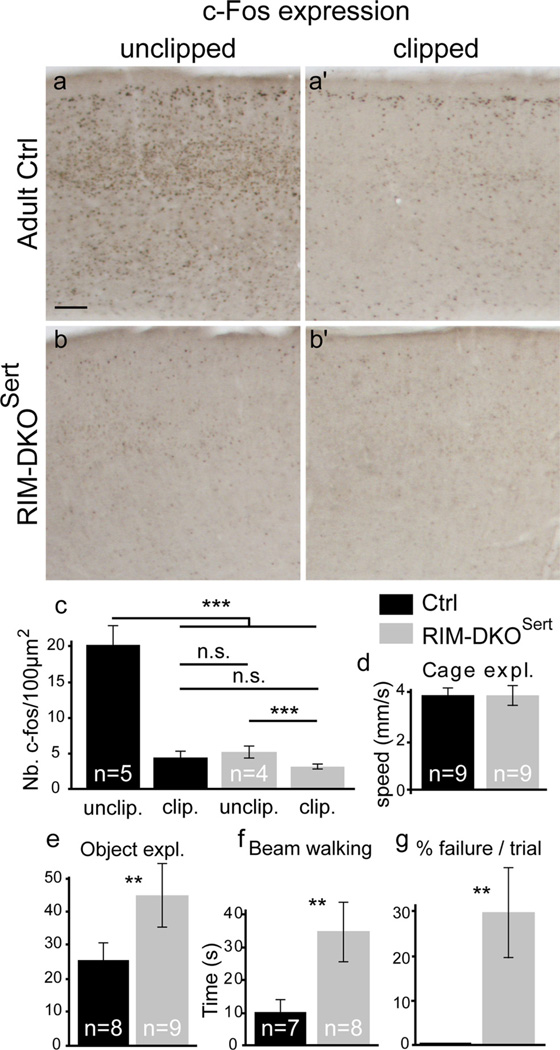Figure 8.
Reduced activity-dependent expression of c-Fos in the somatosensory cortex and altered sensory-motor behavior.a–b′,Adultmicehadallwhiskersclippedononesideofthesnout,and were placed1hinanenriched environment the following day. c-Fos immunoreactivity was revealed on coronal brain sections through the primary somatosensory cortex of the unclipped(contralateral,a, b) and clipped (ipsilateral, a′, b′) sides in control (a, a′) and RIM-DKOSert mice (b, b′). c, Density estimates of c-Fos labeled neurons (mean + SEM) in layer IV from 5 control and 6 recombined mice, shows a significant increase in the S1 cortex corresponding to the unclipped whisker. In the RIM-DKOSert c-Fos expression on both sides is similar to the clipped side of the control. However c-Fos activation is detectable in the mutants when the clipped side is compared with unclipped side. d, General exploratory behavior. Mice of both genotypes did not differ in terms of general activity and exploration, as estimated by videotracking in a box during 10 min sessions. e, Exploration of novel objects. The time exploring new objects was increased in the RIM-DKOSert mice compared with controls. f, g, Beam walking test. RIM-DKOSert needed more time than controls to cross the beam successfully (f). Moreover, RIM-DKOSert mice showed a high probability of failure to cross within the 2 min trial, whereas control showed a very low incidence of failures (g). Scale bar: (in a) a–b′,125 µm. ***p < 0.001; **p < 0.05.

